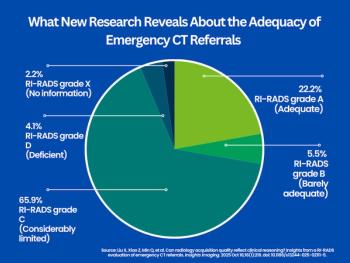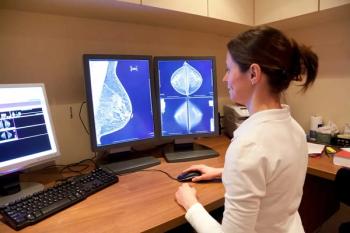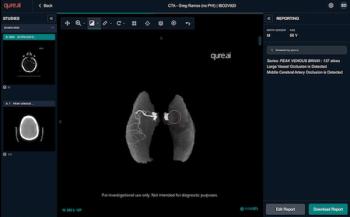
Novel Volumetric Design Promises Faster Scans Than Mechanical CT
Siemens Healthcare is out to change the x-ray tube, which has hardly evolved from the pairing a century ago of anode and cathode inside a bulbous vacuum tube. With Xintek, a small company in Research Triangle Park, North Carolina, the German company is developing a tube that will encircle the patient, firing x-rays from surrounding points and capturing a volume of data in an instant.
Siemens Healthcare is out to change the x-ray tube, which has hardly evolved from the pairing a century ago of anode and cathode inside a bulbous vacuum tube. With Xintek, a small company in Research Triangle Park, North Carolina, the German company is developing a tube that will encircle the patient, firing x-rays from surrounding points and capturing a volume of data in an instant.
Remarkable as they are, today's quarter- to half-second gantry rotations would pale next to the virtually instantaneous scans possible with "multipixel" x-ray tubes.
Conventional x-ray tubes produce electrons when metal filament is heated to 1000°C or above. Those electrons then bombard metal to generate x-rays. Xintek's novel tube also bombards metal with electrons to generate x-rays, but it does so using nanotechnology that allows the process to occur at room temperature and at multiple points around the circumference of the tube. This approach provides the basis for a quantum leap forward, according to Xintek chairman Otto Zhou, Ph.D.
"With present-day tubes, x-rays come from one point in space," Zhou said. "With multipixel technology, the x-rays come out from different points, so you can get all the projection images necessary for CT without any mechanical motion."
The possibilities are already being examined with a prototype CT system at the University of North Carolina at Chapel Hill, where the idea was hatched. The university has licensed the underlying technology to its spin-off Xintek.
This prototype and two years of collaboration between Xintek and Siemens have led the companies to forge a joint venture to further develop the novel tubes. Dubbed XinRay Systems, the joint venture combines the technology licensed to Xintek and Siemens' expertise in refining and manufacturing x-ray tubes.
Commercial products could be scanning baggage at airports in a year or so, Zhou said. Medical applications could be ready a year or two later.
While CT is the most obvious medical application, it is not the only one. The circular x-ray tube of the future might be used to perform rotational x-ray angiography, capturing data in a fraction of the time now needed.
-By Greg Freiherr
Newsletter
Stay at the forefront of radiology with the Diagnostic Imaging newsletter, delivering the latest news, clinical insights, and imaging advancements for today’s radiologists.

































